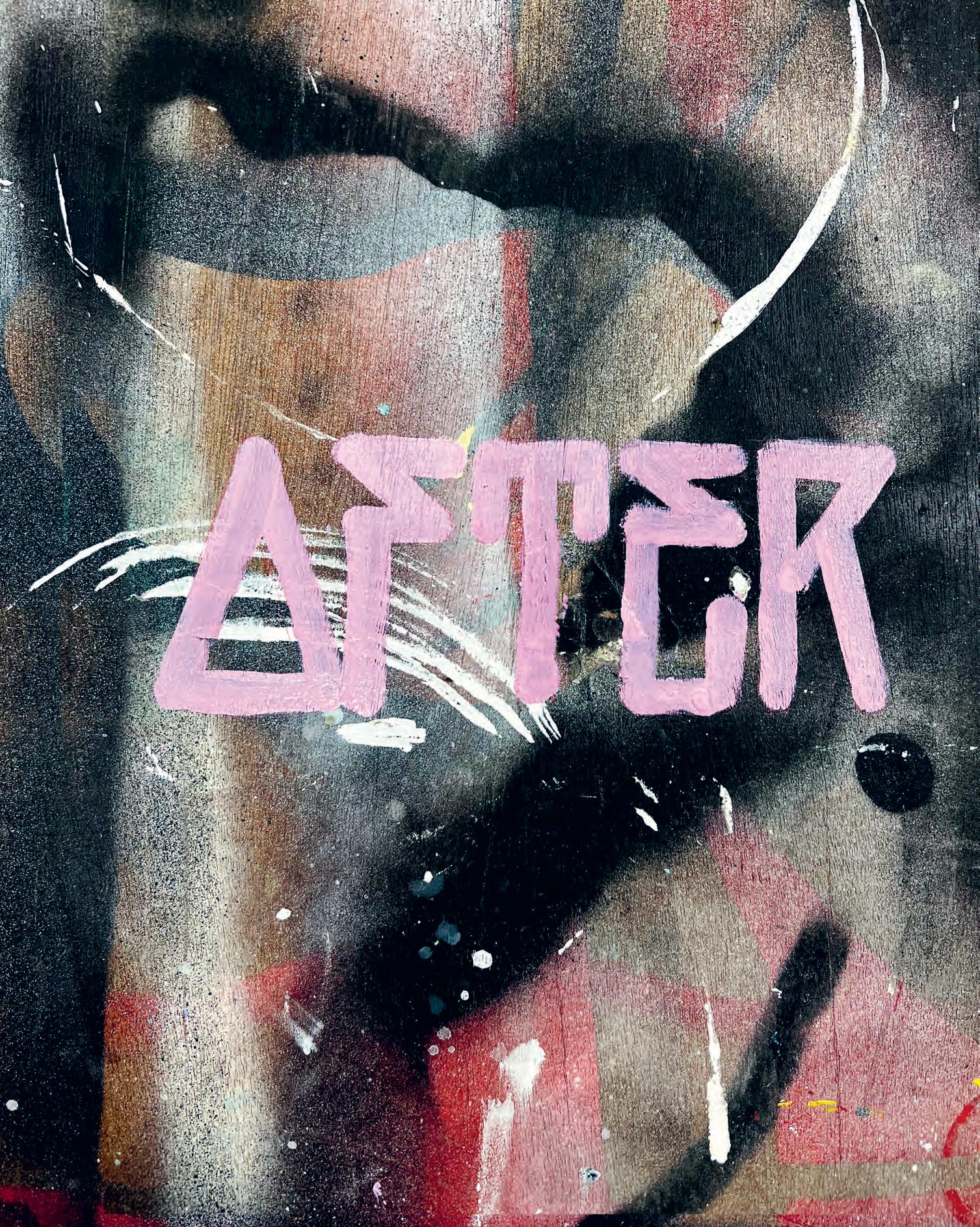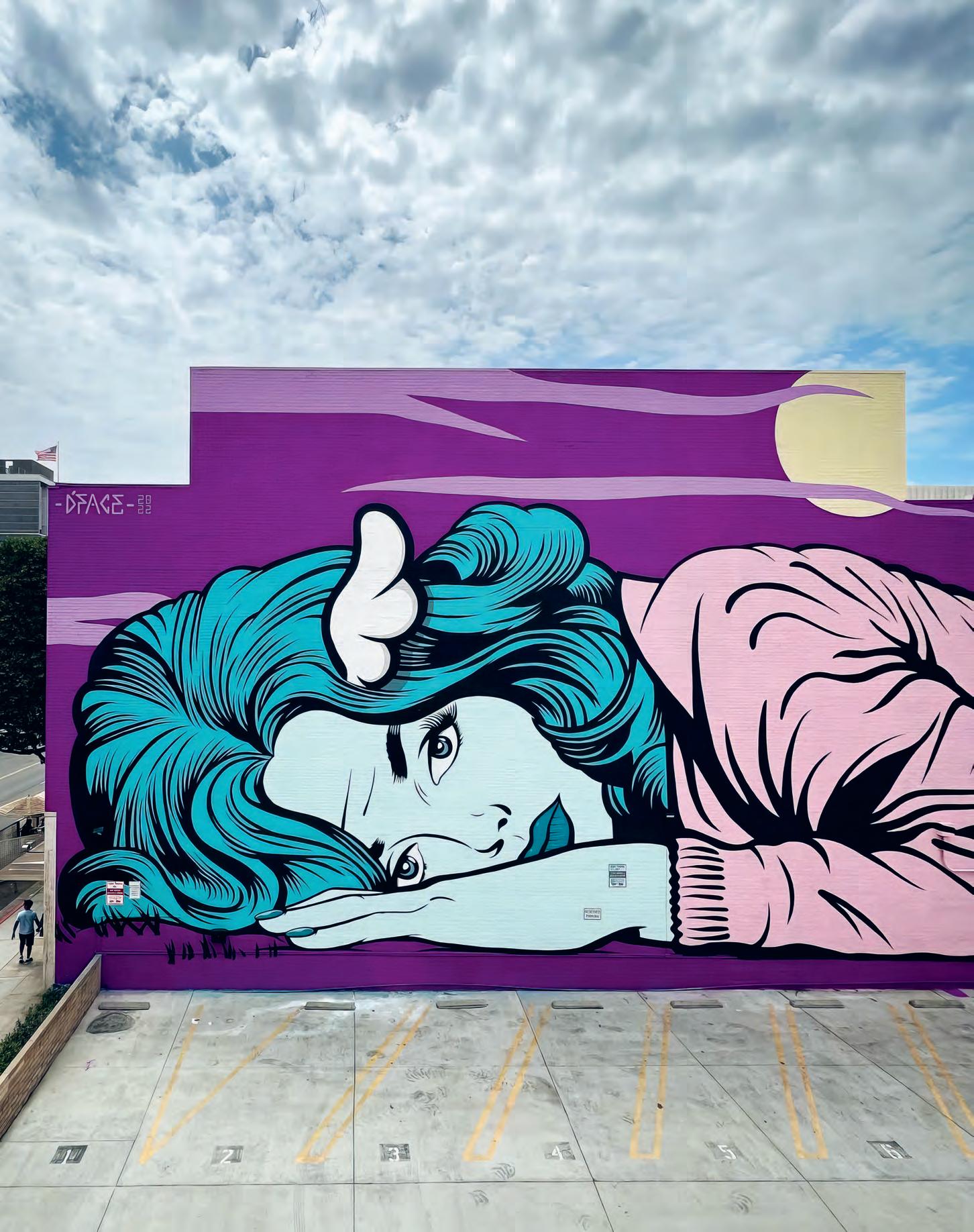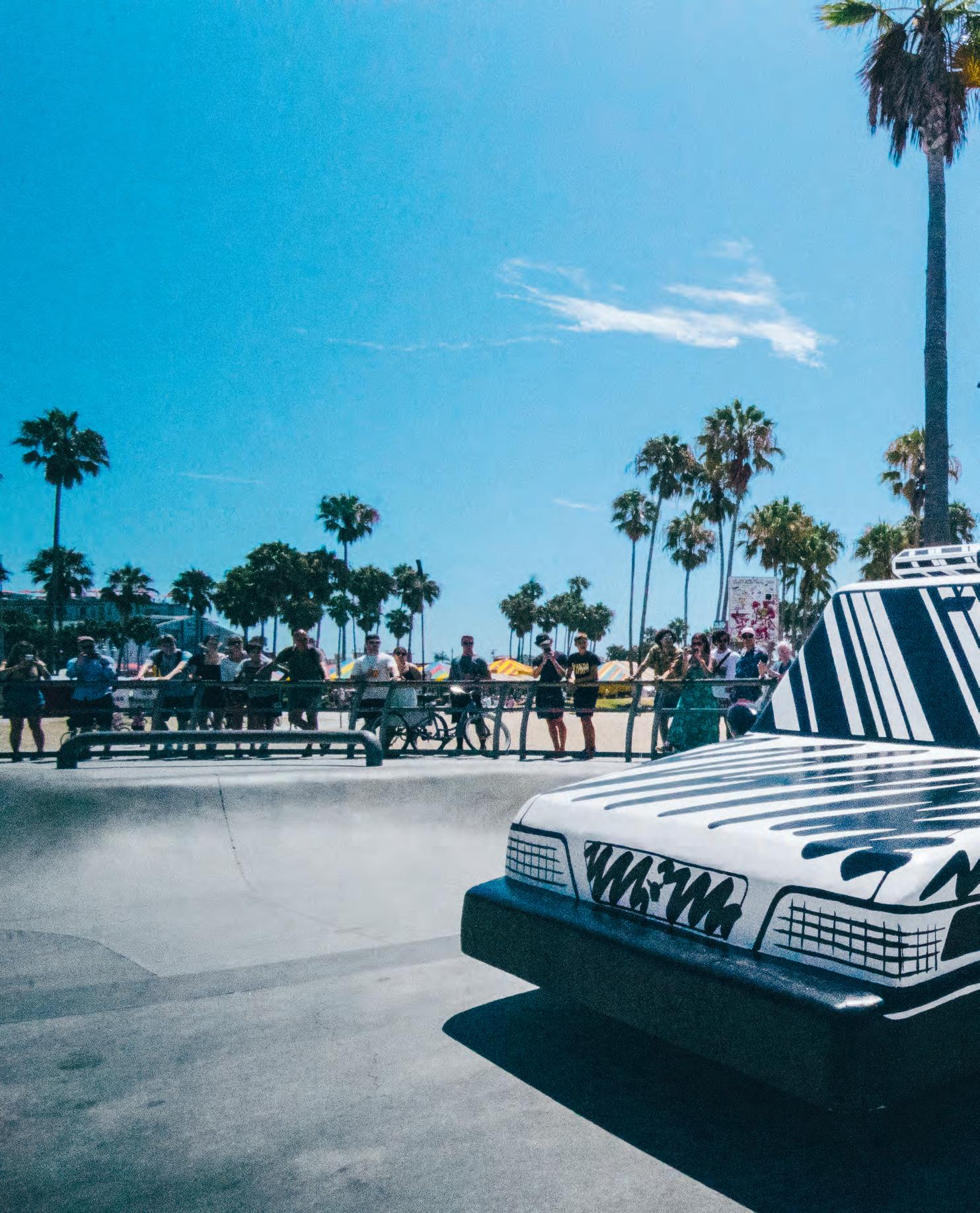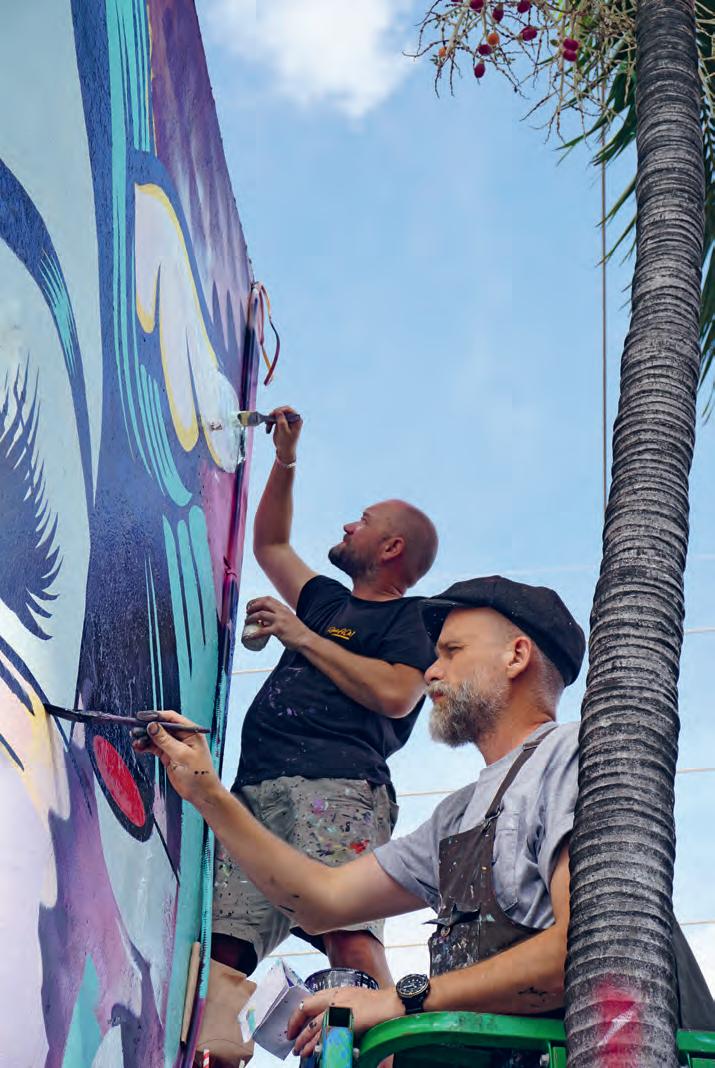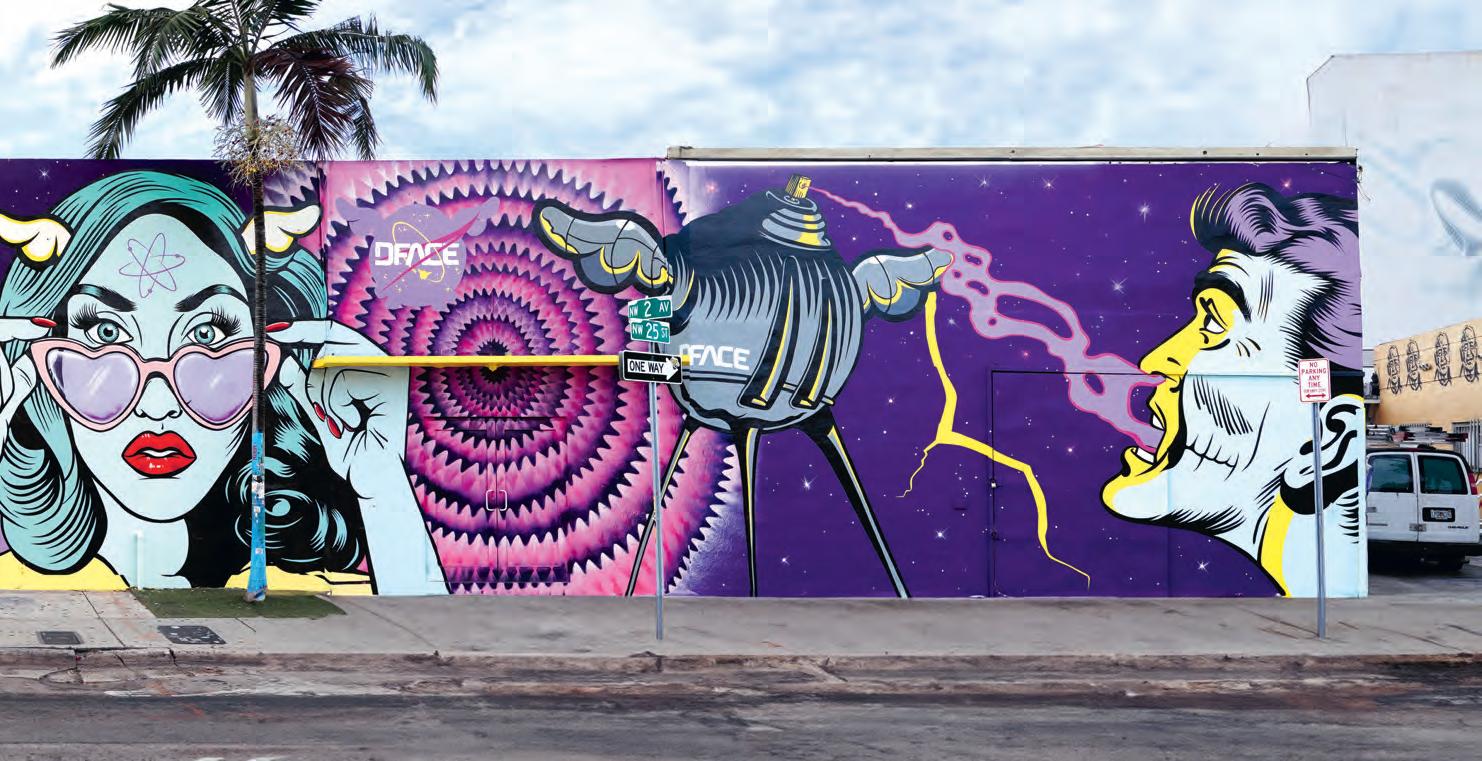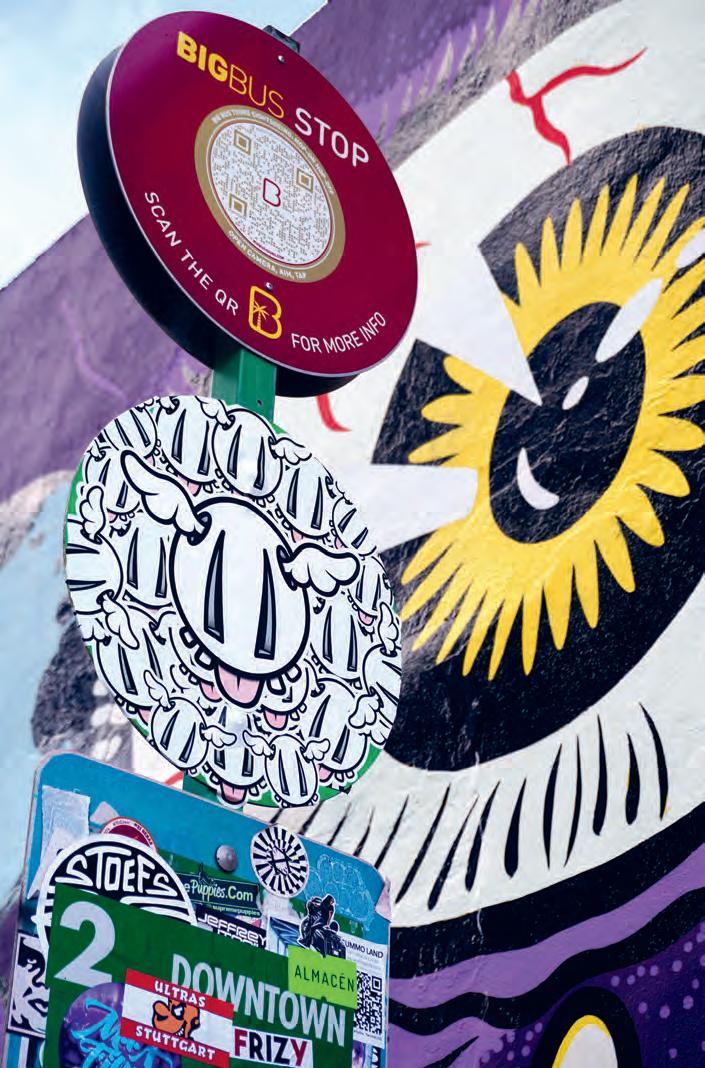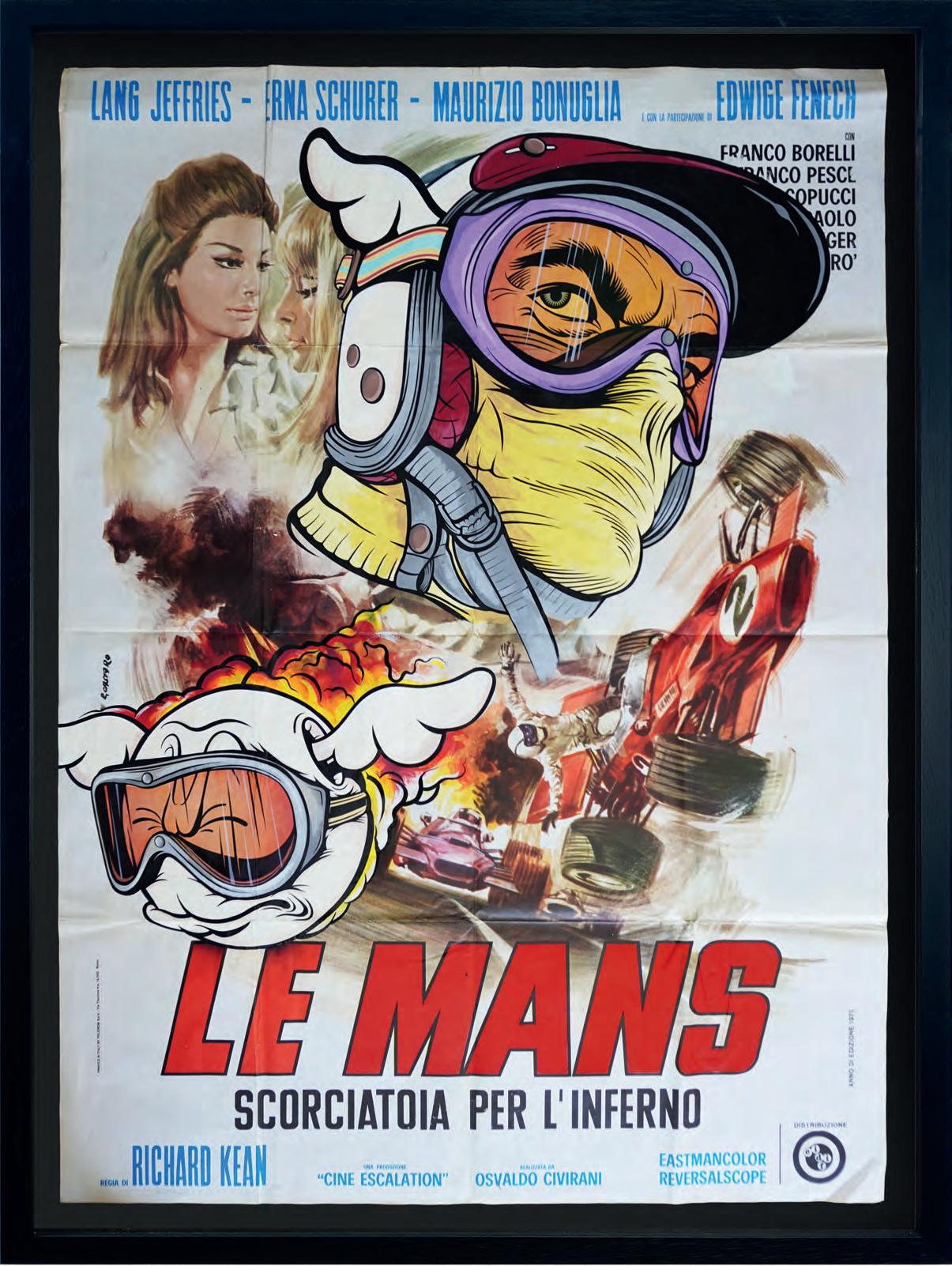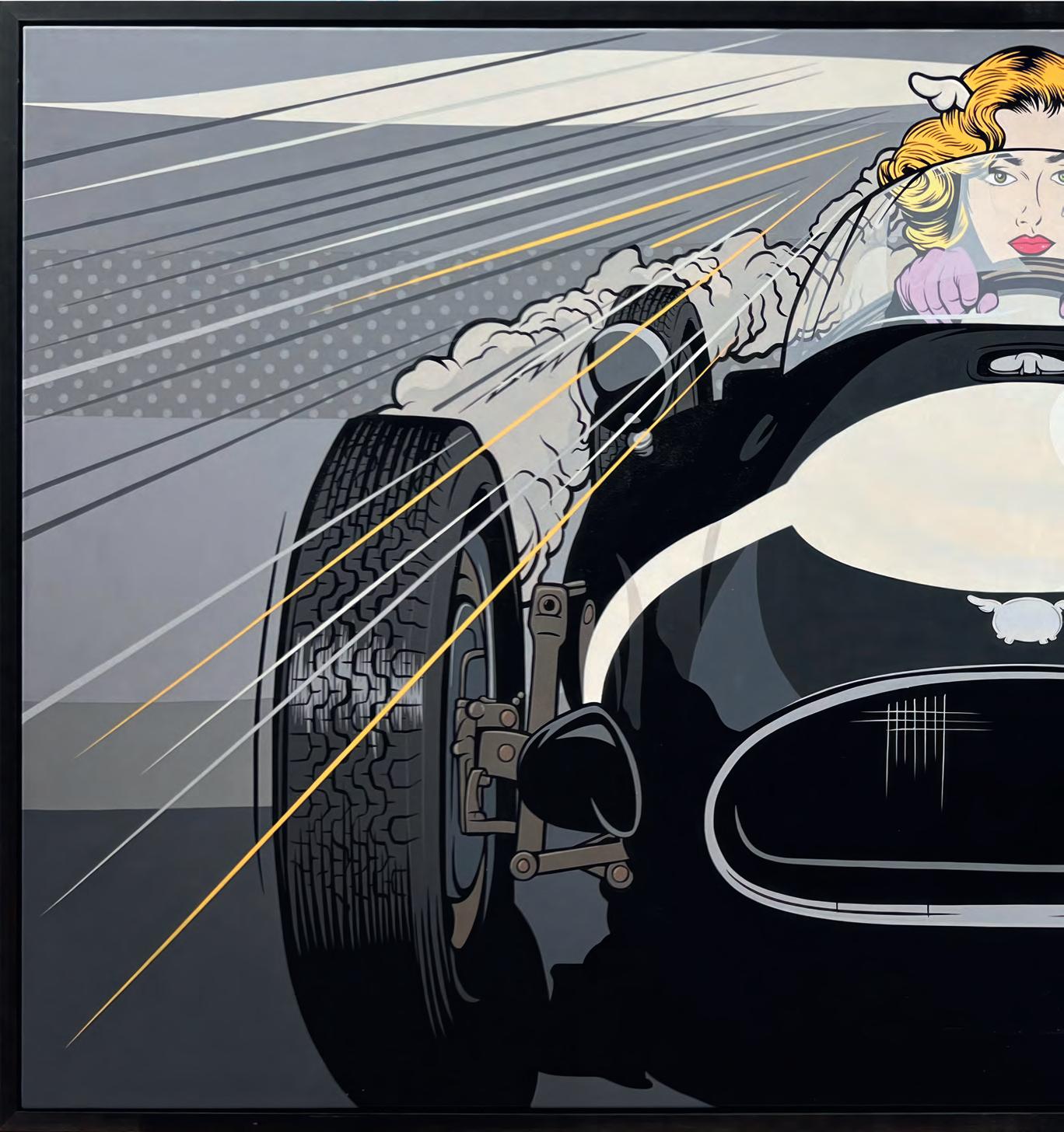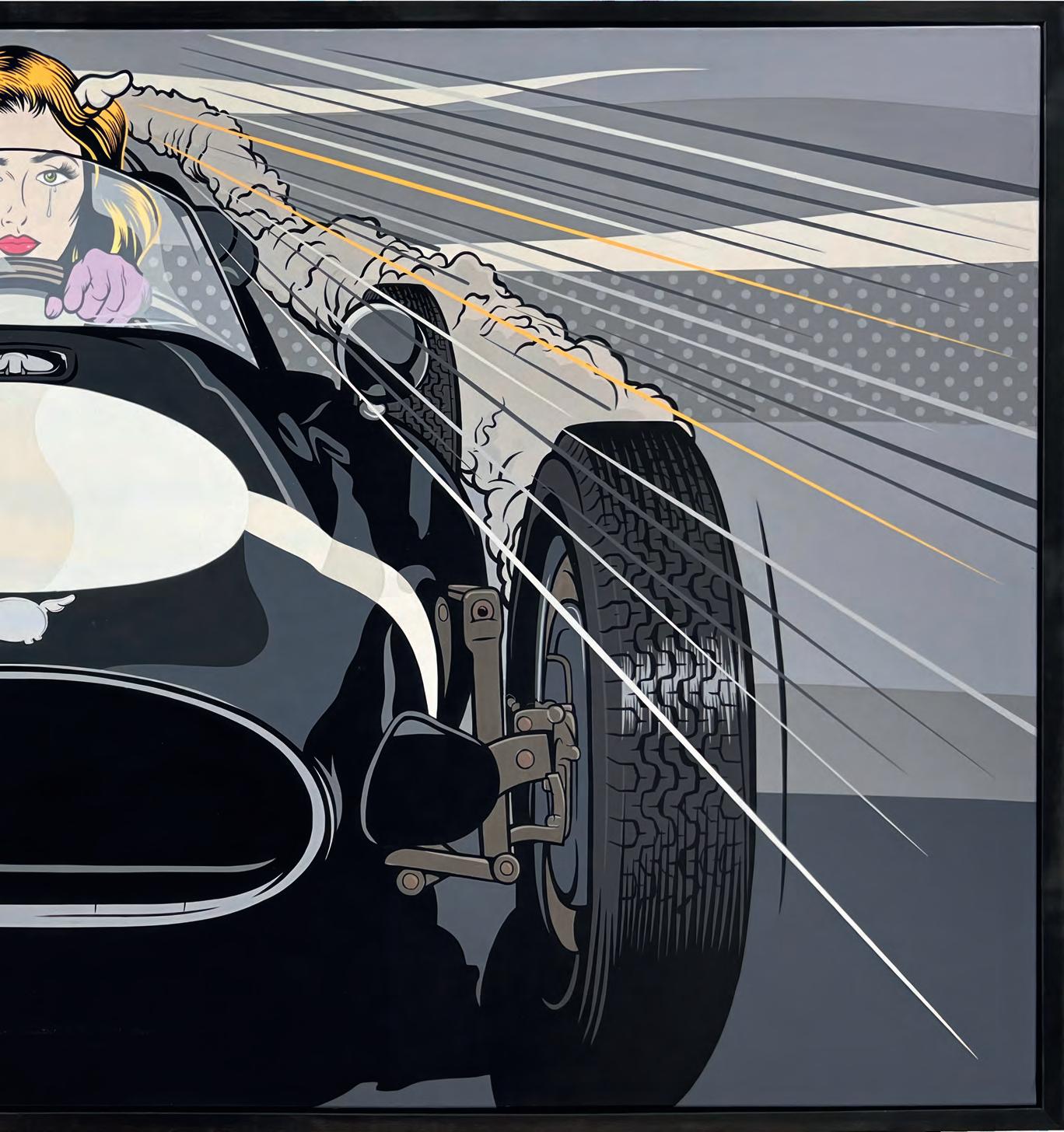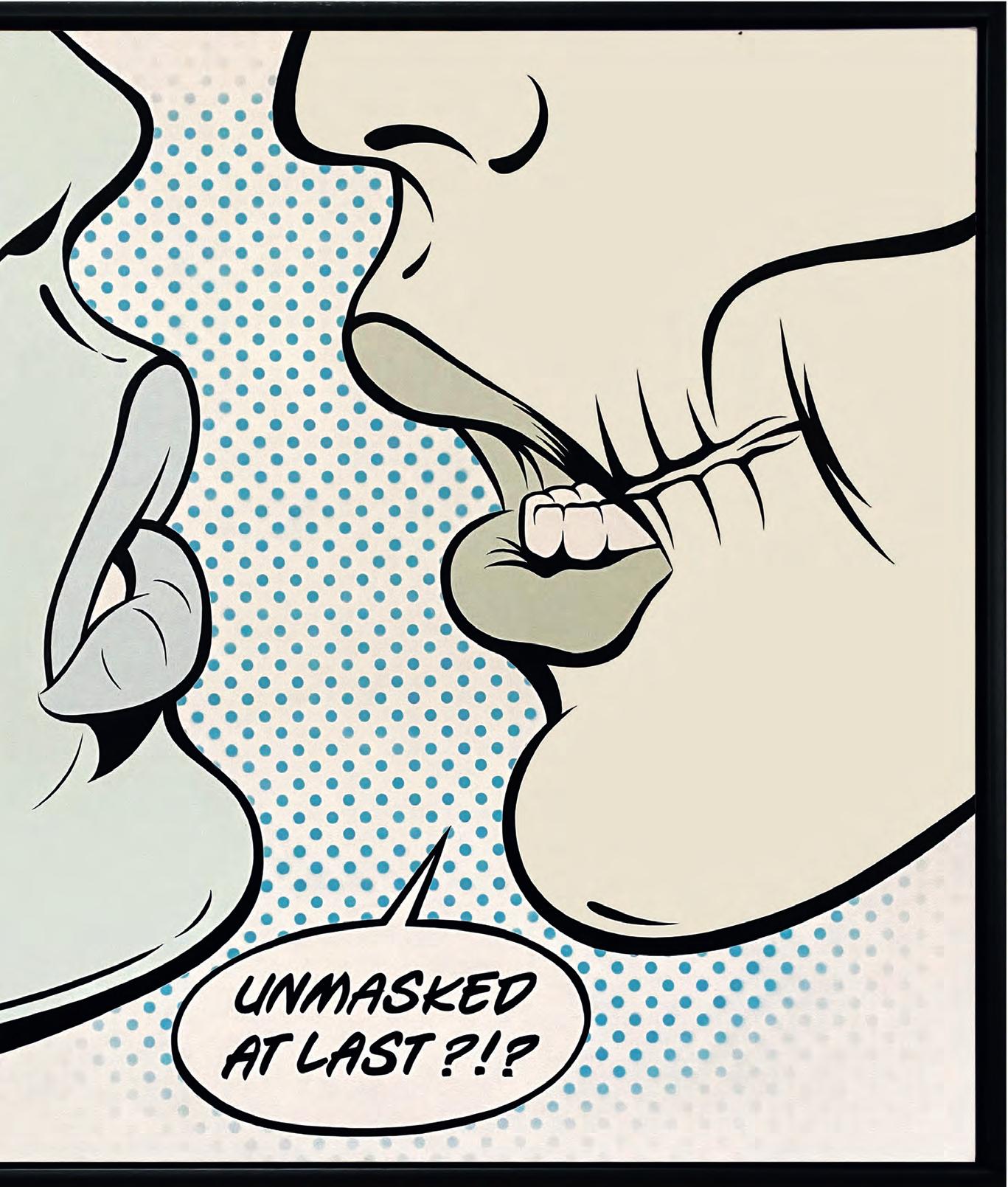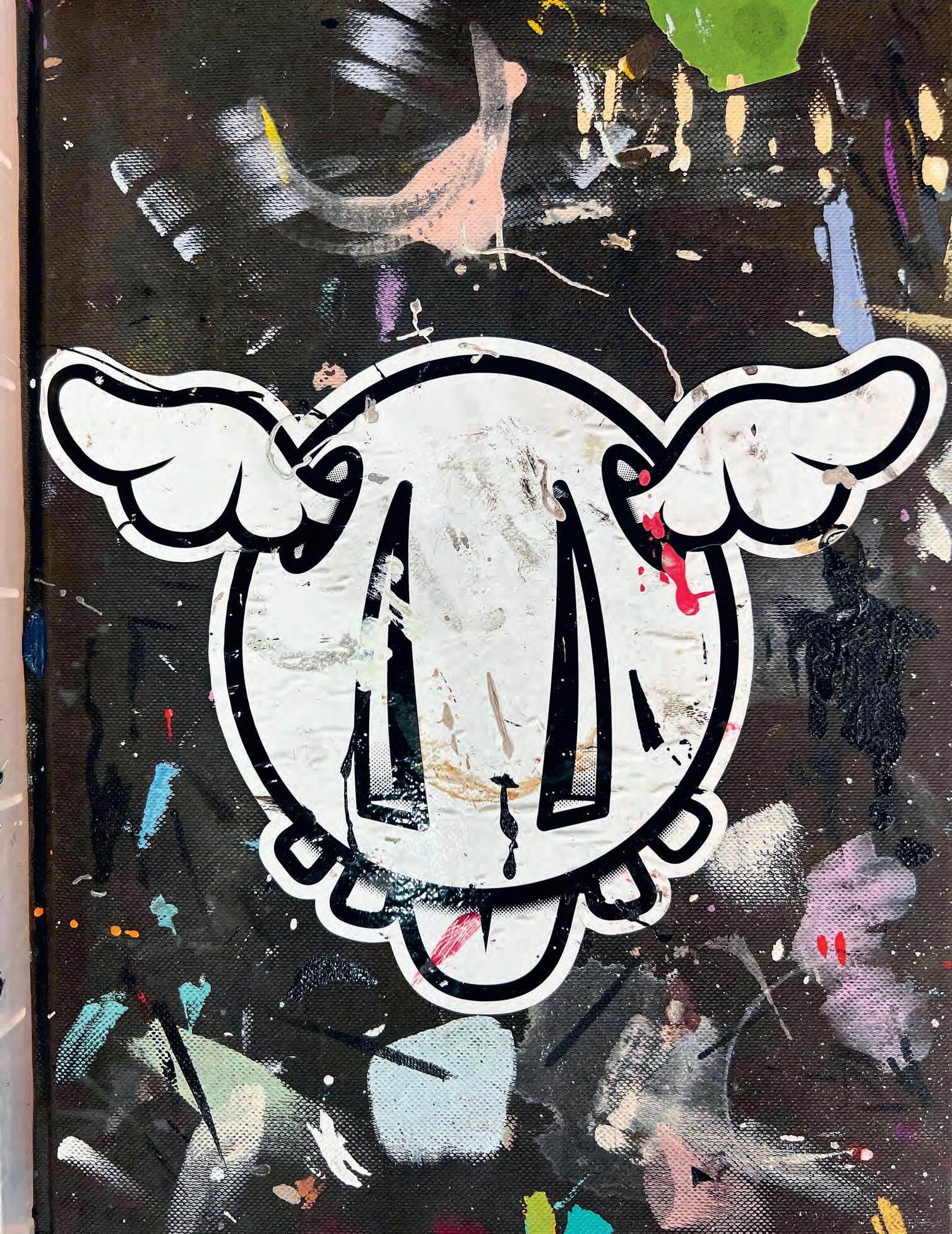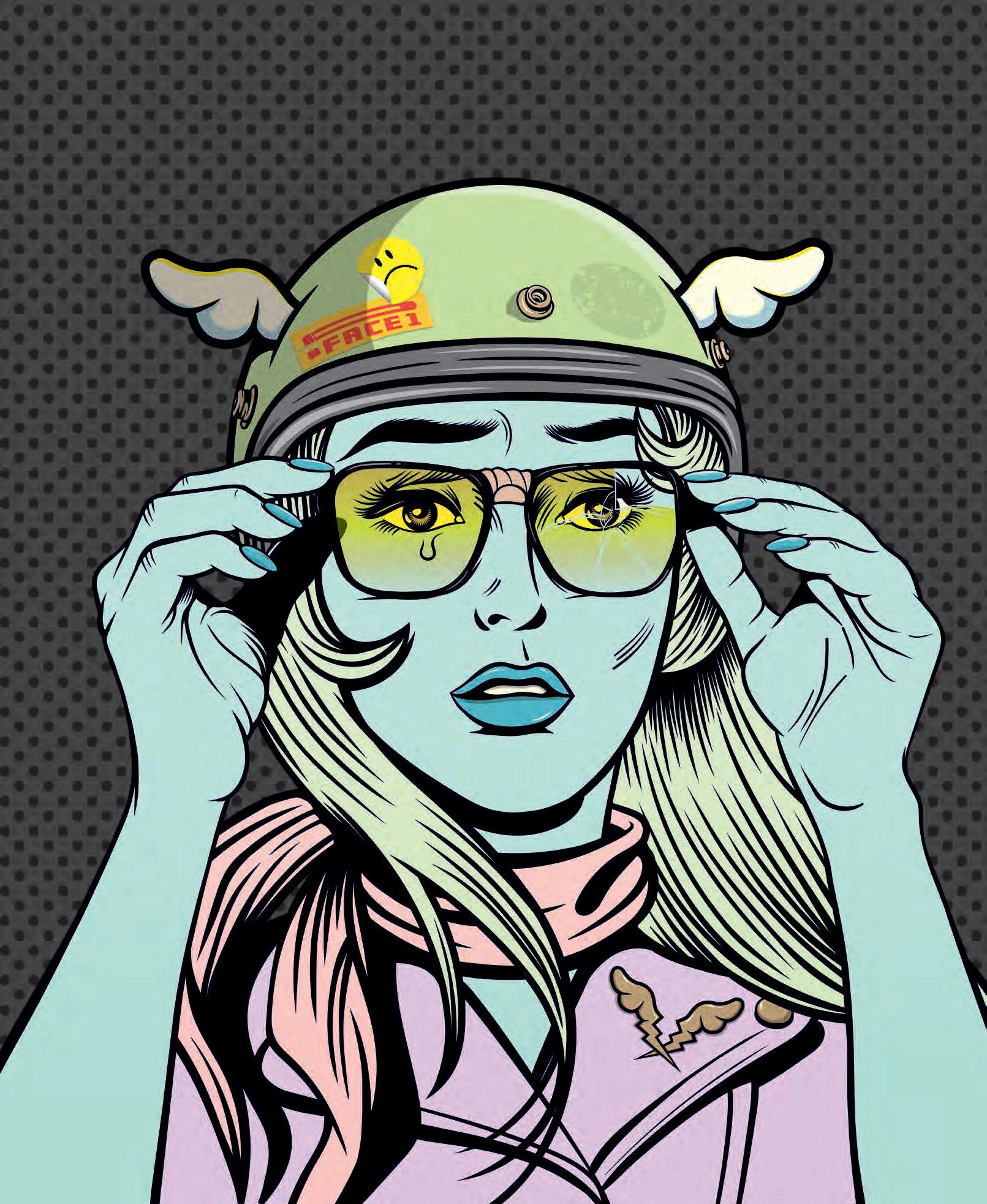

1. INTRODUCTION
PAR / BY DEAN STOCKTON ALIAS D*FACE
Bon. Alors, commençons par le début : ma naissance. Je viens donc au monde et voilà que soudain, un beau jour, j’approche du cap de la cinquantaine… Non pas que je sois surpris d’être encore en vie (même si, plusieurs fois, j’ai cru que ma dernière heure était arrivée), mais les années ont filé à une telle allure que je voudrais profiter de ce « tournant » pour marquer une pause et me recentrer. Ça me rappelle ce que dit Ferris Bueller : « La vie passe si vite. Si on ne s’arrête pas de temps en temps pour regarder autour de soi, elle pourrait nous filer entre les doigts. » Cette phrase prend tout son sens quand on atteint la barre des cinquante ans. Au fond, ce n’est pas tant la question de l’âge qui me perturbe, mais certains changements sont évidents. Un, je suis plus nostalgique ; deux, je suis davantage conscient de la fuite inexorable du temps ; trois, mes cheveux sont plus gris, enfin, le peu qu’il me reste. Le sable qui s’écoule dans le grand sablier de la vie semble glisser de plus en plus vite, un peu comme lorsqu’on regarde des images en accéléré. Mes deux filles, mes beaux petits bébés, sont maintenant de magnifiques ados, et j’ai adoré les voir grandir, mais c’est aussi le signal cruel que le temps ne s’arrête jamais ; le rappel brutal de notre propre impermanence, un puissant aiguillon pour nous pousser à faire, à créer quelque chose qui résistera mieux à l’épreuve du temps. Comme un livre, par exemple.
J’aime à penser que l’âge va de pair avec une certaine forme de sagesse qui est le fruit de notre expérience, faite de réussites et d’échecs. Quand on tombe après s’être pris les pieds dans ses lacets, on se relève, on donne un petit coup à ses vêtements et hop, on se remet en route. La marche du temps a un autre effet sur nous, et on se met à aimer de plus en plus les « vieilleries ». En fait, ce que je veux dire par là, c’est que toute chose, tout objet voire personne qui a résisté et qui porte les traces du temps a une grande valeur. Qu’il s’agisse d’une vieille mobylette rouillée, d’un skateboard rayé et démodé, d’un jean usé ou des rides sur le visage de ma mère, ce n’est pas leur aspect antérieur mais ce qu’ils sont devenus qui fait leur charme ; les traces laissées par le temps révèlent leur histoire.
Malheureusement, ce qui marche et séduit au xxie siècle, c’est le « neuf ».
De toute évidence, nous sommes des consommateurs frénétiques et aguerris et nous préférons nous précipiter pour acheter plutôt que de prendre soin et d’entretenir ce que nous avons déjà. C’est la société du tout jetable, et j’en ai la preuve chaque jour quand je me rends au studio
« La vie passe si vite. Si on ne s’arrête pas de temps en temps pour regarder autour de soi, elle pourrait nous filer entre les doigts. »
Ferris Bueller

Ok, so let’s start at the beginning: I was born. Then, somehow, I hit the half-century mark. I don’t mean ‘ somehow’ in as much as I’m surprised to still be alive, (although there have definitely been times when an early end seemed likely!), I mean fifty years have flashed by so damn quick that it took this landmark birthday for me to pause and recalibrate. What does Ferris Bueller say… “Life moves so fast. If you don’t stop and look around once in a while, you could miss it”? Well, that saying certainly resonates when you hit the big 5-0. Now, I don’t hold much weight to ‘acting your age’ but I haven’t failed to notice that I have become: A. More nostalgic, B. More aware of the relentless march of time and C. Greyer with what little hair I have retained! There’s also been this feeling that the grains of sand in the great hourglass of life have suddenly decided to fall a whole lot faster, with the last twenty years or so seeming like they’ve been subject to the fast-forward button. Seeing my two daughters grow from the cutest babies to beautiful teenagers is a wonderful thing, but also a harsh wake-up call that time never takes its foot off the gas. It’s a not-so-gentle reminder of your own impermanence and a real prod in the back to remind you to try and make something of it all, to create and build things that might fare better in the arena of time than you. Like a book, for example…
I do like to believe that with age comes a certain wisdom, one that can only be developed by taking a few laps around the block and tripping over your laces once in a while, learning to pick yourself back up, brush yourself down and keep going. One of the many side effects of this is an increasing appreciation for what can best be described as ‘old stuff’. What I mean by that is any thing, object or even person that’s done its/ their lap of the course and has not only managed to stick it out but wears the signs of its time served as a badge of honour. ‘Old is gold’ tends to be the phrase given to these things and it’s a trait I find myself increasingly drawn to. Whether it’s a rusty old motorbike, a scratched-up old school skateboard, a well-worn pair of jeans or the laughter lines on my mother’s face, the appeal is not so much what they once were but what they have become and how they tell that story by appearance alone.
The flip side to this is that the twenty-first century has become ever more entranced by ‘the new’. We are a firmly established consumer-driven species in which little is cherished in the long term and what is new one year

en compagnie de Waffle, mon fidèle compagnon, mon chien adoré. Sur le chemin (tout en passant en revue le planning de la journée, l’état de l’économie, les friandises préférées de mon toutou, etc.), je vois toujours plein d’affaires sur le trottoir, tout un tas de trucs que les gens ont jetés et qui attendent le passage du camion poubelle. Moi, forcément, ça ne me laisse pas insensible (et Waffle non plus), parce que, parmi ces choses, il y en a beaucoup que je rêvais d’avoir quand j’étais gamin. De super vélos, des skateboards, des jouets, des livres et bien plus encore se retrouvent dans la rue, abandonnés et délaissés, parce que leurs propriétaires les ont certainement remplacés par des modèles plus récents, « meilleurs » ou plus « tendance ». C’est bel et bien à l’image de notre mode de vie, où tout est jetable et remplaçable. Personnellement, j’ai du mal à rester indifférent à de tels trésors, et souvent, de manière presque instinctive, je m’approche, je les ramasse et je les embarque avec moi au studio. Non pas parce que j’en ai besoin, mais parce qu’à une époque, j’aurais donné n’importe quoi pour posséder certains de ces objets sur le point de finir à la décharge. Alors un tel gaspillage, c’est difficile à accepter ou à ignorer. Là, je donne un peu l’image de l’artiste dingo qui accumule tout un bric-à-brac dans son studio, avec une centaine de chats déchaînés, mais pas du tout. Je préfère les chiens.
Je viens d’une famille de la classe ouvrière avec des aspirations de la classe moyenne. Chez nous, on ne jetait absolument rien. Ma mère raconte toujours en riant qu’elle m’habillait avec les vieux vêtements de ma sœur. Moi, ça m’était complètement égal. Même si j’avais eu le choix, je n’aurais pas fait mieux, j’étais très content comme ça. Mon père, lui, était expert en réparations ; peu de choses lui résistaient, sauf quand elles se décomposaient littéralement dans ses mains. J’étais épaté par son habileté manuelle. On n’achetait pas aussi facilement qu’on le fait aujourd’hui – tout nouvel achat était mûrement étudié, réfléchi ou du moins longuement anticipé. Les rares fois qu’on achetait quelque chose de neuf, on en prenait un soin extrême, on allait presque jusqu’à élever l’objet nouvellement acquis au rang de fétiche. C’est ce qui s’est passé par exemple quand nous avons eu, pour Noël, un magnétoscope Betamax, obsolète au bout de deux semaines (en raison de l’arrivée du fameux format VHS), mais que mon père avait convoité comme s’il s’agissait d’une relique sacrée. Je ne serais pas surpris qu’il l’ait conservé, de même que les vieilles cassettes,
I mean fifty years have flashed by so damn quick that it took this landmark birthday for me to pause and recalibrate. What does Ferris Bueller say… “Life moves so fast. If you don’t stop and look around once in a while, you could miss it”? Well, that saying certainly resonates when you hit the big 5-0.
is quickly replaced by the next. I see the evidence of this throw-away society first-hand on my daily walk to the studio with my sidekick and much-loved doggo, Waffle. As we walk, (often deep in discussion about the day’s agenda, the state of the economy, his favourite treats, etc.) we see an abundance of objects that have been discarded outside of people’s homes, ready for refuse collection. What shocks me (and Waffle too) is that many of these items are things that I’d have dreamt about owning when I was a kid; perfectly good bikes, skateboards, toys, books and way more, all just left by the wayside, unwanted and unloved, presumably replaced by the latest ‘better’ or more ‘on-trend’ version of the same thing. It’s a sure reminder of the disposable or replaceable way we live life. I find it hard to disregard these veritable street treasures and often have an almost knee-jerk reaction that compels me to take a closer look, to bring whatever it is back to the studio. It’s not because these are things that I need in my life but because once upon a time I’d have given a limb for some of these objects and now they’re just waiting to go into landfill. That kind of waste is hard to accept or ignore. And I know I must sound like some scatty hoarder with a studio stacked with trash and a hundred cats running wild, it’s not the case, I prefer dogs…
As a kid growing up in a working-class family with middle-class aspirations, nothing was allowed to just be thrown away. My mum still laughs at how she used to dress me as a toddler in my sister’s hand-me-down clothes. I honestly didn’t think twice at the time. Even if I’d had the choice, I wouldn’t have known any better. Much the same, my dad used to repair everything and anything until it was ready to disintegrate in his hands. I’ve always admired his ability to fix pretty much whatever needed fixing. Buying something new wasn’t the straightforward option that it is today - you had to sit down and figure it out with gained knowledge or otherwise total guesswork. Then, on the rare occasion that a new purchase was made, it was treated with the utmost care and respect, so much so that it often bordered on worship. One Xmas morning stands out in my mind with the arrival of a new Betamax video player, which despite becoming obsolete within about two weeks of its launch (due to the arrival of VHS), my dad still coveted like some sacred relic - I wouldn’t be surprised if he still had it along with all the old tapes, maybe due to the fact that his mate, Dave, regularly showed up with a heap of pirate films of questionable quality and content. All of this instilled in me the mentality of cherishing what I buy, own, build or create.
1.
Après :
Curieusement, c’est la partie « Après » qui figure en premier dans le livre ; on mange le dessert avant le plat principal, en quelque sorte. Cette bizarrerie n’est pas sans raison, toutefois. Non seulement la plupart des images qui composent cette section sont plus anciennes (d’un point de vue chronologique) que celles qui viennent par la suite, mais ce choix a été motivé par la volonté d’illustrer le charme inédit d’œuvres livrées aux éléments. Certains des stickers présents dans ce livre ont survécu plus de vingt ans dans l’espace public ; c’est un gage de qualité, et aujourd’hui ils ont une valeur bien plus grande que celle qu’ils avaient quand je les ai collés dans ma jeunesse. Jamais je n’aurais pu moi-même leur donner le même aspect. Chacun a un caractère unique, en fonction de là où il se trouve, sur un poteau de lampadaire, un panneau de signalisation, un mur. Ils sont devenus autre chose. Cette impermanence les rend d’autant plus remarquables, elle donne lieu à des actes créatifs à part entière. À vrai dire, au cours de ma carrière, c’est l’aspect que j’ai mis le plus de temps à comprendre, à apprécier, et je regrette que cela n’ait pas été le cas dès le début. Le contenu des prochaines pages ne livre qu’un aperçu de la multitude de photos prises ces dernières années avec mon téléphone. C’est une quête qui a viré à l’obsession et la découverte d’un sticker D*Dog ayant bien vieilli vaut de l’or. Quand nous retournons dans une ville avec mon équipe, c’est à qui repérera le premier un sticker D*Dog. C’est à la fois un jeu et la marque du temps, une évolution impossible à accélérer.
After:
We start, somewhat ironically with the “After” portion of this book. A bit like having dessert before your main course. There is a reason behind the madness though; not only is much of the imagery that you will find across the pages of this section actually older (chronologically speaking) than that which appears later, but the rationale behind this publication was to express the renewed charm of an artwork left to the elements. Some of the stickers that are captured here in this book have survived upwards of two decades living in the wilds of the public domain and not only does that speak to the worth of a good quality sticker but has also allowed them to become something greater than what they were when a younger me put them up. They become something that I could never have made with my own two hands - they are entirely unique to the conditions of whatever lamp post, signpost or wall to which they were assigned and in that sense, they are renewed. In their very impermanence, they become that much more distinctly memorable, creative acts in their own right. This is a side to my career that took me the longest time to fully adjust to and appreciate as I now realise it should have been from the start. As you’ll see within the following pages this is just a snapshot of the many photos I’ve captured on my phone over the course of the last few years, it’s become a bit of an obsession and the discovery of a really nicely aged D*Dog is metaphorical gold. When revisiting a city, we always have a competition as to who spots the first D*Dog sticker, its become both a game and mark of time, an ageing process which can’t be rushed.
